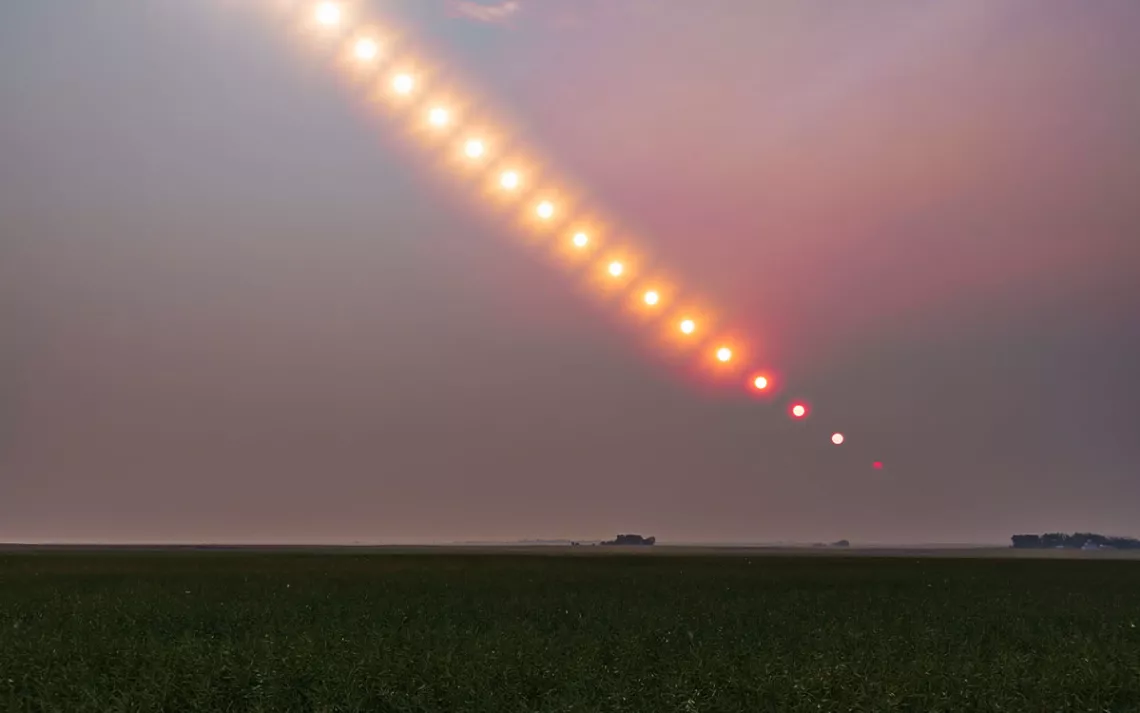Solar Geoengineering Could Become the “New Form of Denial” for Silicon Valley Enthusiasts, Critics Say
The idea of dimming the sun to slow climate change is gaining popularity—but only with billionaires in the Global North

In February, billionaire George Soros announced his interest in blocking sunlight over the Arctic to help slow the effects of climate change. He’s not the first ultra-wealthy person to back the technology, also known as solar geoengineering. Others, including Bill Gates and Facebook cofounder Dustin Moskovitz, have pumped millions into various sun-dimming projects over the last couple of years.
Climate change is a dire threat to life on Earth, and without serious interventions, it’s only projected to get worse in the coming decades. But solar geoengineering is a largely untested and theoretical approach that carries the risk of any number of potential unintended consequences. And it’s being pushed almost exclusively by white, wealthy individuals from the Global North. “It’s quite a patriarchal, colonial perspective,” says Jennie Stephens, a professor of sustainability science and policy at Northwestern University.
Technically, solar geoengineering refers to a host of technologies—everything from brightening clouds over the ocean to constructing a space-based shield to deflect sunlight like a giant, translucent umbrella. The most common and well-known of these solutions involves stratospheric aerosol injection, or SAI. This strategy involves spraying fine particles, such as titanium, sulfur, or diamond dust, into our atmosphere to reflect back a certain percentage of the sun’s rays.
SAI was first proposed back in 1974 by Soviet climatologist Mikhail Budyko, but the idea didn’t garner any real consideration until recent decades. What interest it has gained has been largely concentrated in North America and Europe. “It’s a fringe group in the Global North, particularly the United States,” says Dhanasree Jayaram, an environmental policy researcher at the Manipal Academy of Higher Education in Karnataka, India.
In the first IPCC meeting on solar geoengineering, which was held in 2011, every member of the scientific steering group hailed from the US, UK, Canada, or Switzerland—despite the fact that the meeting took place in Lima, Peru. Harvard University and the University of Chicago are both currently spearheading SAI research.
Hosea Olayiwola Patrick noticed this phenomenon as well. In forum after forum, he observed advocates from the US or Europe stand up and make sweeping statements about how people living in Africa should feel about solar geoengineering. But none of them seemed to have spoken to any actual Africans. This struck Patrick, a political scientist at the University of KwaZulu-Natal in South Africa, as disingenuous. “Africans should be the ones telling us the position of Africa, right?” he says.
Patrick launched a continent-wide survey to find out what Africans actually think about stratospheric aerosol injection. He’s received feedback from hundreds of people. Most feel ambivalent toward the technology if they don’t think it will affect their lives, Patrick says. However, they tend to be against it if they think that it will directly impact their lives or livelihoods.
There’s a strong chance that it would, according to many experts. Earth’s climate is incredibly complex; manipulating those tightly interwoven systems would have all kinds of unintended consequences. Experts worry that a huge injection of atmospheric aerosols might mess with the still-healing ozone layer or initiate a climatic butterfly effect, throwing far-off weather patterns into disarray. “The implication is going to be global because climate is borderless,” Patrick says. The effect could be particularly catastrophic in already-climate-vulnerable countries, such as Nigeria and Bangladesh—the very places that SAI advocates purportedly aim to protect.
What’s more, “climate systems are not just about temperature,” says Aarti Gupta, a professor of global environmental governance at Wageningen University in the Netherlands. Even if SAI helped cool the planet with few side effects, it wouldn’t lower carbon dioxide levels, which means that deadly ocean acidification would continue to eat away at marine ecosystems across the globe. And that’s not to mention the threat of “termination shock,” a cataclysmic temperature backlash if humans ever stopped spraying aerosols.
In late 2022, the US-based start-up Make Sunsets caused an uproar when it was reported that the company had begun releasing sulfur particles into the sky above Mexico. When confronted about the ethics of unsanctioned atmospheric tampering, the company’s cofounder, Luke Iseman, cast himself in a heroic light. “It’s morally wrong, in my opinion, for us not to be doing this,” he told MIT Technology Review.
In Stephen’s opinion, such thinking plays into an insidious brand of Silicon Valley individualism. “The climate crisis is framed as an isolated, discrete scientific problem that needs technical solutions,” she says. This worldview calls for a single powerful and well-informed hero to simply step in and fix it. “It’s like ‘the White Man’s Burden,’ basically,” says Jayaram.
The technology is also appealing because spraying sulfur dust into the air is relatively cheap compared with actually investing in green infrastructure. By some estimates, it costs about $10 a year to offset the warming effect of one ton of carbon dioxide using stratospheric aerosol injection. In contrast, it will cost billions to build up renewable energy infrastructure in developing countries.
In this way, it could help wealthy individuals and corporations justify continued emissions by masking the rate of climate change and enabling them to delay green infrastructure investments. “It risks becoming a new form of denial,” Gupta says.
Only a truly global decarbonization effort can save the world from climate change, critics of solar geoengineering agree. And it needs to be led by those with the most at stake. “It needs to come from every level,” Jayaram says. “Not just the international level, but also at the national level, at the local level.”
 The Magazine of The Sierra Club
The Magazine of The Sierra Club



